
Lucius Roy Holbrook was a major general who commanded the United States Army's Philippine Department from 1936 to 1938.

Buffalo Soldiers were United States Army regiments that primarily comprised African Americans, formed during the 19th century to serve on the American frontier. On September 21, 1866, the 10th Cavalry Regiment was formed at Fort Leavenworth, Kansas. The nickname "Buffalo Soldiers" was purportedly given to the regiment by Native Americans who fought against them in the American Indian Wars, and the term eventually became synonymous with all of the African American U.S. Army regiments established in 1866, including the 9th Cavalry Regiment, 10th Cavalry Regiment, 24th Infantry Regiment, 25th Infantry Regiment and 38th Infantry Regiment.

The 18th Infantry Regiment ("Vanguards") is an Army Infantry regiment. The 18th Infantry Regiment currently exists with one active battalion under the U.S. Army Regimental System and has no regimental headquarters.

The 2nd Cavalry Division was a cavalry division of the United States Army.
The 3rd Wisconsin Cavalry Regiment was a volunteer cavalry regiment that served in the Union Army during the American Civil War.
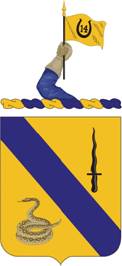
The 14th Cavalry Regiment is a cavalry regiment of the United States Army. It has two squadrons that provide reconnaissance, surveillance, and target acquisition for Stryker brigade combat teams. Constituted in 1901, it has served in conflicts from the Philippine–American War to the Operation Iraqi Freedom and Operation Enduring Freedom in Afghanistan.
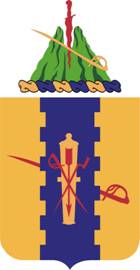
The 4th Cavalry Regiment is a United States Army cavalry regiment, whose lineage is traced back to the mid-19th century. It was one of the most effective units of the Army against American Indians on the Texas frontier. Today, the regiment exists as separate squadrons within the U.S. Army. The 1st Squadron of the 4th Cavalry's official nickname is "Quarterhorse", which alludes to its 1/4 Cav designation. The 3rd Squadron of the 4th Cavalry's official nickname is "Raiders". Today, the "1st Squadron, 4th Cavalry" and "5th Squadron, 4th Cavalry" are parts of the 1st Infantry Division, while the "3rd Squadron, 4th Cavalry" serves as part of the 25th Infantry Division. On 23 September 2009, the "4th Squadron, 4th Cavalry" officially stood up at Fort Riley, Kansas as part of the 1st "Devil" Brigade, 1st Infantry Division. On 28 March 2008, the "5th Squadron, 4th Cavalry" officially stood up at Fort Riley, Kansas as part of the 2nd "Dagger" Brigade, 1st Infantry Division. The 6th Squadron, 4th Cavalry served as part of the recently inactivated 1st Infantry Division, 3rd "Duke" Brigade, at Fort Knox, Kentucky. The 1st and 5th Squadrons are assigned to their respective Brigade Combat Teams in the 1st Infantry Division. The 4th Squadron was inactivated in October 2015. The 3rd Squadron is assigned to the 3rd Brigade Combat Team in the 25th Infantry Division.

The Battle of Carrizal occurred on June 21, 1916. It was a major skirmish between United States Army troops of General John J. Pershing's Punitive Expedition and Carrancista troops fought at the town of Carrizal in the Mexican state of Chihuahua.
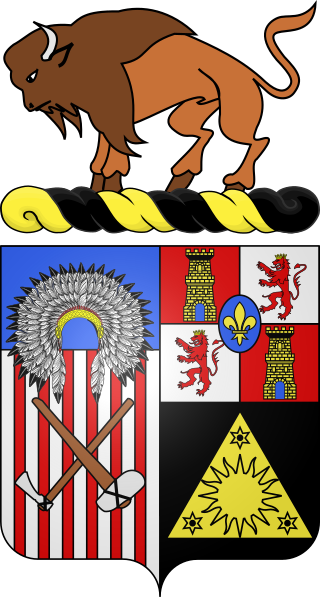
The 10th Cavalry Regiment is a unit of the United States Army. Formed as a segregated African-American unit, the 10th Cavalry was one of the original "Buffalo Soldier" regiments in the post–Civil War Regular Army. It served in combat during the Indian Wars in the western United States, the Spanish–American War in Cuba, Philippine–American War and Mexican Revolution. The regiment was trained as a combat unit but later relegated to non-combat duty and served in that capacity in World War II until its deactivation in 1944.

Walter Scribner Schuyler was a career officer in the United States Army. A veteran of the American Indian Wars, Spanish–American War, Philippine–American War, and Mexican Border War, he attained the rank of brigadier general. A Cavalry officer, he carried out several high profile command assignments over the course of his military service, including the 5th Cavalry Regiment and Military District of Hawaii.

Harry Dwight Chamberlin was a career officer in the United States Army. A veteran of the Moro Rebellion, Pancho Villa Expedition, World War I, and World War II, he attained the rank of brigadier general, and was most notable for his command of several Cavalry units, including 1st Squadron, 8th Cavalry Regiment, 1st Squadron, 14th Cavalry Regiment, 2nd Cavalry Regiment, the Cavalry Replacement Center at Fort Riley, and 4th Cavalry Brigade, 2nd Cavalry Division. During World War II, he commanded the New Hebrides Task Force, Southwestern Security District, and Fort Ord.
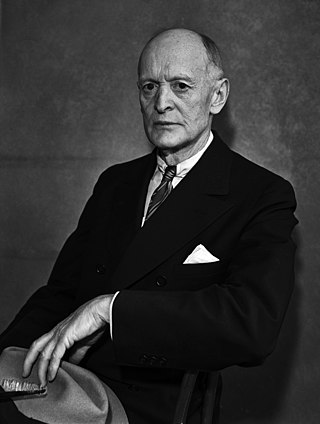
Herbert Jay Brees was a lieutenant general in the United States Army.

Clement Augustus Trott was a highly decorated officer in the United States Army with the rank of major general in the United States Army. A West Point alumnus, Trott participated in the Philippine–American War and World War I, where he distinguished himself as chief of staff of the 5th Division.
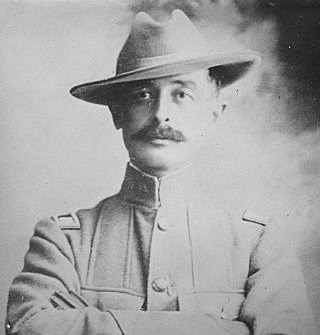
Herbert Jermain Slocum was in charge of the 13th Cavalry Regiment during the Battle of Columbus, New Mexico in 1916 where Pancho Villa burned several buildings in Columbus, New Mexico, stole weapons and horses and killed 18 Americans.

Walter Lawrence Reed was a major general in the United States Army who served as Inspector General of the Army from 1 December 1935 to 23 December 1939. His father was Army Medical Corps officer Major Walter Reed, namesake of the Walter Reed Army Medical Center. He was born in Fort Apache, Arizona, and moved to Washington, D.C., where he spent most of his early life. Reed fought in the Spanish–American War and traveled across the country and to the Panama Canal Zone. He then began working as an inspector during World War I and became the inspector of Base Section Number 5 in February 1919 then worked in the American Expeditionary Forces office. For his work he earned the Distinguished Service Medal. Reed attended various military schools before returning to the Inspector General's department. In 1935 he became the inspector general of the United States Army. He retired in 1940, but was recalled to active duty during World War II, filling a role in the War Department until 1946. Reed died in the Walter Reed Army Medical Center in 1956.

Wilhelm Josef Daser was a German military officer who commanded the 70th infantry division of the Wehrmacht during the Battle of the Scheldt and surrendered unconditionally on 6 November 1944 in Middelburg.

John Fisher Preston Jr. was an American army officer who rose to the rank of Inspector General of the United States Army. His first conflict was the Spanish–American War serving in the 7th Infantry, and fighting in the Battle of San Juan Hill and Siege of Santiago. For his service in the war, Preston received the Silver Star. He then spent around a decade serving at various forts in the Philippines and across the United States. Preston was involved in the Quartermaster Corps and the Pay Department until the outbreak of World War I, serving a couple of years in France. He attended various Army schools until 1923, and had various leadership positions in the Army over the next fifteen years, culminating in appointment as Inspector General in 1931. After a four-year tenure and brief stationing at Fort Sam Houston, he retired from the army in 1936 and entered the banking industry in San Antonio. He died on July 1, 1960.

Henry Rodney Adair (1882–1916) was an American cavalry officer. He is most notable for his participation in the Battle of Carrizal of the Pancho Villa Expedition.

James Robert Lindsay was a career officer in the United States Army. An 1890 graduate of the United States Military Academy, he was a veteran of the Spanish–American War, Philippine–American War, United States occupation of Veracruz, and World War I. During the First World War, Lindsay was promoted to brigadier general as commander of the 97th Division at Camp Cody, New Mexico. After the war, he was commissioned as a brigadier general in the Organized Reserve Corps and served as Professor of Military Science and Tactics at Kentucky's Louisville Male High School.
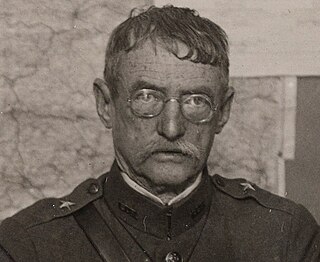
Robert Douglas Walsh was a career officer in the United States Army. An 1883 graduate of the United States Military Academy, he was a veteran of the American Indian Wars, Spanish–American War, Philippine–American War, Pancho Villa Expedition, and World War I. Walsh served until retiring in 1919, and was a recipient of the Army Distinguished Service Medal and French Legion of Honor (Commander).



















